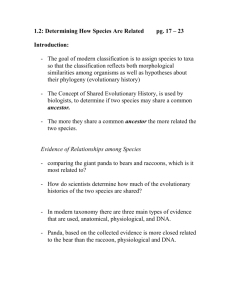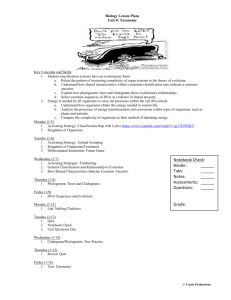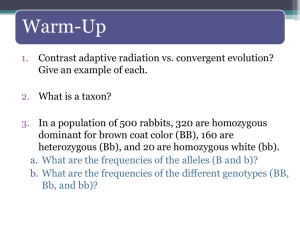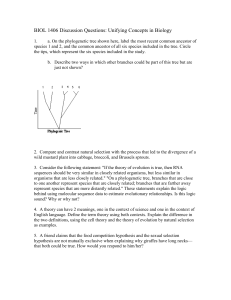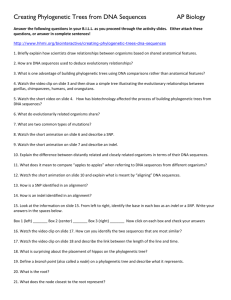Checkpoint answers for A5
advertisement
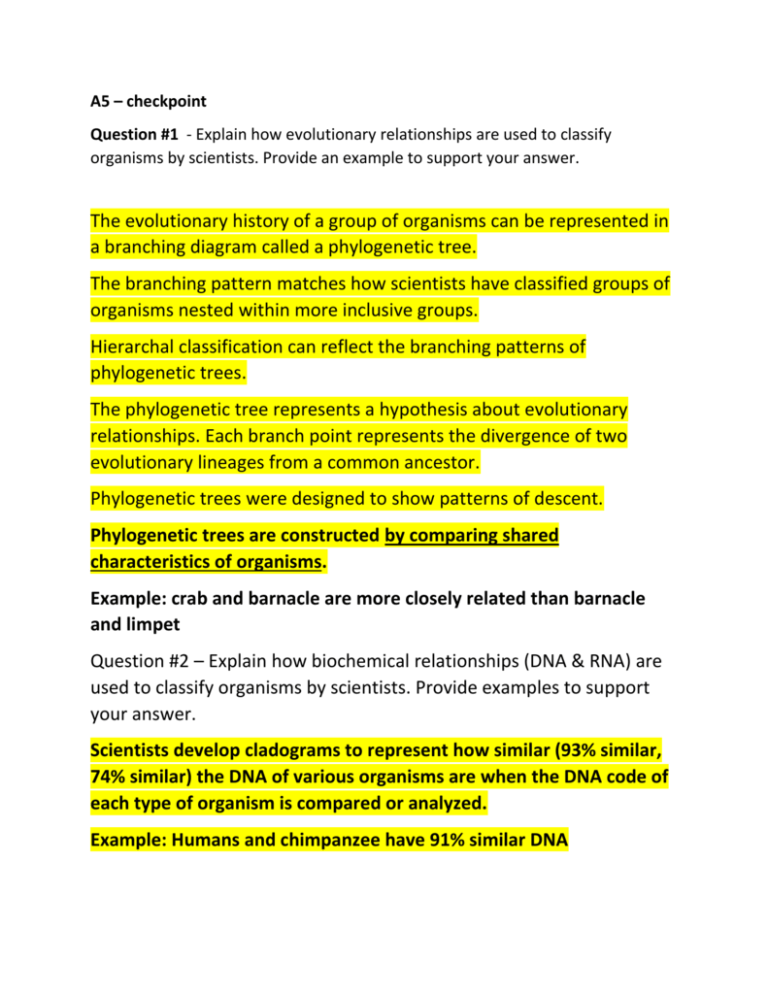
A5 – checkpoint Question #1 - Explain how evolutionary relationships are used to classify organisms by scientists. Provide an example to support your answer. The evolutionary history of a group of organisms can be represented in a branching diagram called a phylogenetic tree. The branching pattern matches how scientists have classified groups of organisms nested within more inclusive groups. Hierarchal classification can reflect the branching patterns of phylogenetic trees. The phylogenetic tree represents a hypothesis about evolutionary relationships. Each branch point represents the divergence of two evolutionary lineages from a common ancestor. Phylogenetic trees were designed to show patterns of descent. Phylogenetic trees are constructed by comparing shared characteristics of organisms. Example: crab and barnacle are more closely related than barnacle and limpet Question #2 – Explain how biochemical relationships (DNA & RNA) are used to classify organisms by scientists. Provide examples to support your answer. Scientists develop cladograms to represent how similar (93% similar, 74% similar) the DNA of various organisms are when the DNA code of each type of organism is compared or analyzed. Example: Humans and chimpanzee have 91% similar DNA





